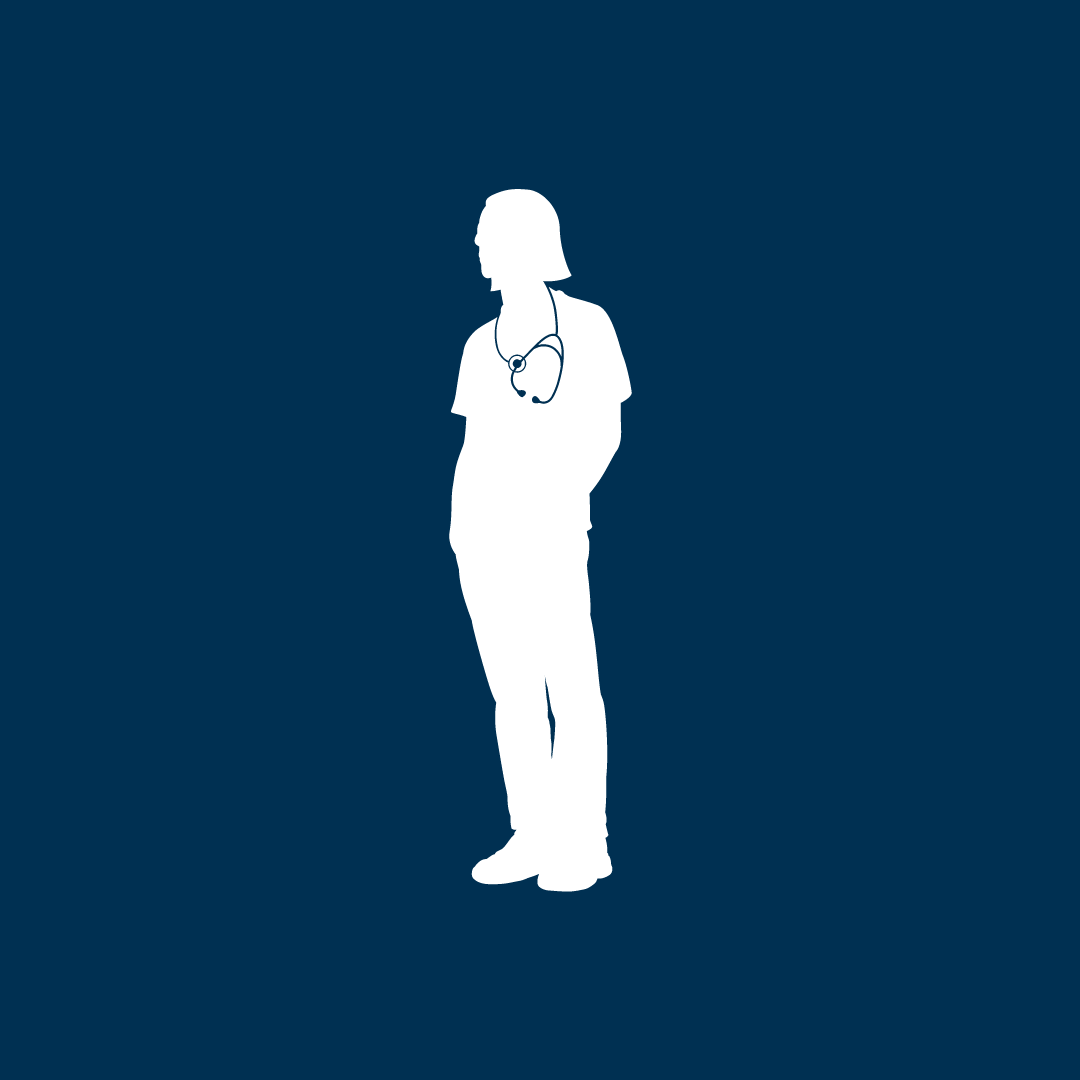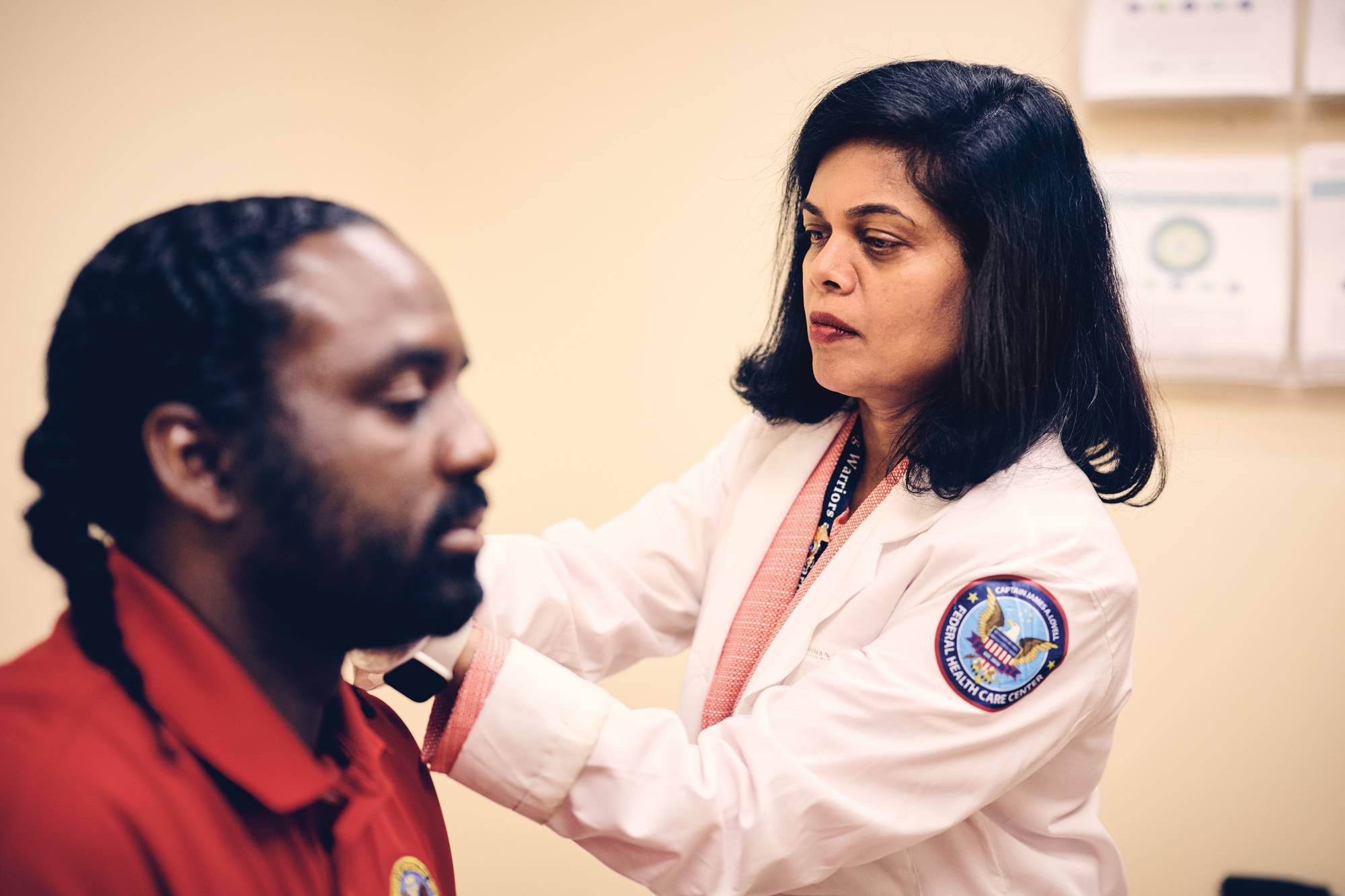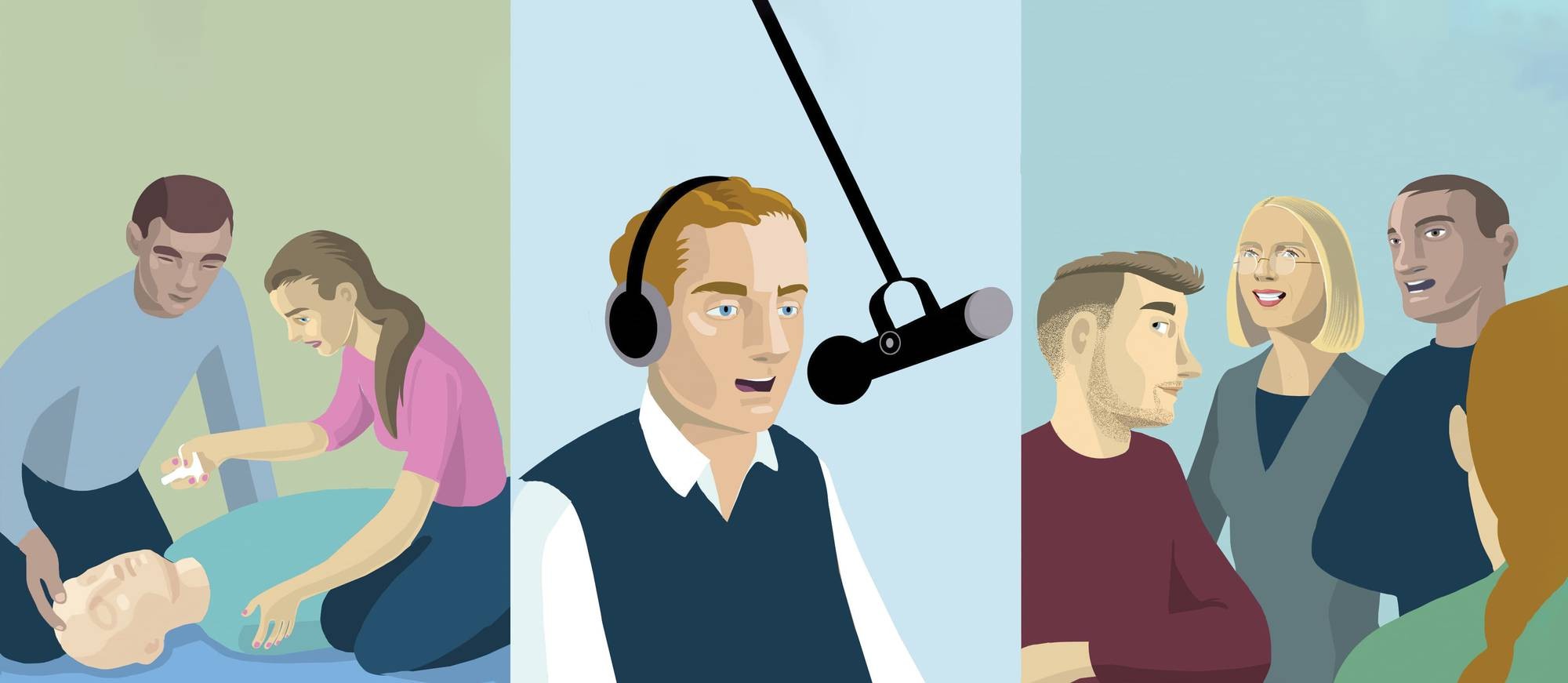Kim Westerman, MFA, EdD, is a travel and wellness writer, coffee expert and longtime university writing teacher based in Berkeley, California.
Author Page
In Need of Nurses
Exploring multiple paths to address the nursing shortage
Community & Service
Nurses are the people by our bedside when we are sick and scared. They are the people who care for us ’round the clock — the ones with whom we spend the most time in any medical-care setting, from the pediatrician’s office to the ICU. They are often our conduit to the larger care team when we’re in the hospital, advocating alongside our families in discussions about treatment and other important decisions.
But what happens when there simply aren’t enough nurses?
The United States is facing a severe nursing shortage. The Health Resources and Services Administration projected a 2025 shortage of 78,610 full-time registered nurses (RNs). The Illinois Nursing Workforce Center suggests the state of Illinois, alone, is facing a shortage of nearly 15,000 RNs this year.
Twenty-three percent of RNs working in outpatient, ambulatory and clinical settings have retired or plan to retire during the next five years, according to the 2022 National Sample Survey of Registered Nurses. While hospitals had the lowest share of nurses who have retired or plan to retire, nurses employed in this setting had the lowest levels of job satisfaction.
The nursing shortage began before COVID, and the pandemic exacerbated the problem exponentially. In September 2021, an American Association of Critical-Care Nurses survey showed 66% of acute-care nurses have considered leaving nursing after their experiences during the pandemic. This trajectory also shrinks the pool of potential nursing faculty, mentors and other members of the nursing ecosystem.
“The COVID-19 pandemic had an unprecedented impact on the nursing workforce, and we’re still recovering from that,” says Karen Mahnke, MSN, RN, NEA-BC, Bernthal Family chief nurse executive and vice president of operations at Northwestern Medicine Lake Forest Hospital. “The intensity of nursing care for critically ill patients took its toll. We lost some of our most tenured, seasoned, very experienced nurses to retirement or different settings outside the hospital in the early days of the pandemic. Our workforce is starting to restabilize now, but we remain concerned about the nursing shortage that is predicted to last as far into the future as the data can forecast.”
Educating Nurse Anesthetists in Underserved Areas
One of the ways the RFU College of Nursing is addressing the multifaceted problem of the nursing shortage is to expand its very successful model to underserved areas. Jennifer Greenwood, CRNA, PhD, associate professor and associate program director of the Nurse Anesthesia Program at RFU’s Colorado location, explains: “There are many programs in Illinois, Wisconsin and Michigan, but far fewer in Colorado, Wyoming, New Mexico and Nevada. There’s a severe nurse anesthetist shortage here in Colorado, and it made sense for us to bring our established program here.”
Nurse anesthesia is the oldest of the advanced-practice nursing specialties. As early as the 1880s, nurses were called upon by surgeons to ensure their patients remained amnestic and lived through surgery successfully. At that time, anesthesia involved the rather imprecise dropping of ether on a mask of cotton and placing it over a patient’s nose and mouth. Dr. Greenwood says this is an early example of the vital role of interprofessional communication and close connection with patients, the need for which continues to this day: “Our program focuses on clinical decision-making and evidence-based practice so that nurses can adapt the care they provide to the complex needs of patients they encounter.”
Interprofessionalism for the win
Lisa Hopp, PhD, RN, FAAN, dean of the College of Nursing at RFU, points to several factors that contribute to the shortage: a large aging population with chronic conditions that need greater nursing care, an aging population of nurses who will retire, burnout among nurses and capacity limitations in nursing education. Dr. Hopp and her faculty believe the trend toward interprofessionalism can go a long way toward building resilience and recruiting talented caregivers to close the gap — not to mention improve patient care and outcomes.
“The interprofessional model relies on professionals from different healthcare disciplines collaborating to provide patient-centered care,” Dr. Hopp says. “A nurse in the interprofessional model contributes to decision-making that requires the team’s wisdom to optimize patient care and outcomes.” She argues that this model is the best one for patient care; it inherently acknowledges all members of the team have unique skills and knowledge to contribute to the plan of care.
The interprofessional model requires staffing hospitals with nurses whose education, experience and scope of practice support independent and interdependent clinical decision-making. Dr. Hopp believes that when nursing programs prepare a workforce ready for collaboration and competent practice to meet the clinical needs of partner organizations and health care in general, patients will have better outcomes. When care is more collaborative than siloed, patients, families, nurses and all members of the team are more satisfied. Better morale and patient outcomes will lead to a more stable workforce and net long-term economic benefits, she says.
Lori Thuente, PhD, RN, director of the RFU College of Nursing’s Dr. Scholl Foundation Empathy Lab, says there are different patient outcomes based on the level of nurses’ training: “The public tends to think a nurse is a nurse is a nurse — patients are not wondering what your degree is; they just want you there. But data shows that the higher a nurse’s level of education, the better the patient outcomes — and this extends to providers’ outcomes, as well.” (See below for a rundown on nurses’ education levels.)
Nurses with varying levels of education and preparation are critical members of an interprofessional team. “When led by those with advanced preparation, such teams excel in patient care, and nurses’ morale improves,” Dr. Hopp adds.
Caring for caregivers
An April 2022 analysis published in Health Affairs found that the total supply of RNs decreased by more than 100,000 from 2020 to 2021 — the largest drop ever observed during the past four decades. A significant number of nurses who left the workforce were under the age of 35, and most were employed in hospitals.
If we didn’t know it prior to the start of the pandemic, what we learned in 2020 and 2021 is that nurses’ self-care became a critical part of the job. But when one is caring for patients in life-or-death situations, it’s nearly impossible for caregivers to prioritize their own well-being. When nurses are unable to care for themselves, burnout increases, and patient outcomes suffer.
One of the core values of RFU’s nursing programs is to help nurses cultivate their own emotional intelligence, to bring mindfulness to clinical practice and to practice regular self-care, all of which are key to reducing burnout, building resilience, and retaining and recruiting nurses.
A multipronged approach can address these issues and others to tackle the nursing shortage. It’s a good thing, because we need nurses, now more than ever.

Nursing on the Level
Beyond entry-level nursing positions, undergraduate and graduate education programs confer additional responsibilities along with their titles.
Entry-Level Nursing Designations
- CNA (Certified Nursing Assistant): Provides basic patient care under the supervision of LPNs or RNs.
- LPN/LVN (Licensed Practical Nurse/Licensed Vocational Nurse): Provides basic nursing care and can administer medications (varies by state) under the supervision of RNs or physicians.
Undergraduate Nursing Designations
- ADN (Associate Degree in Nursing): Entry-level registered nurses perform patient assessments, administer medications and provide technical care.
- BSN (Bachelor of Science in Nursing): RNs with expanded responsibilities and professional clinical judgment, including leadership roles, community health, research awareness and eligibility for management.
Graduate Nursing Designations
- MSN (Master of Science in Nursing): RNs with an MSN may enter professional nursing, pursue advanced practice roles (NP, CNS, CNM, CRNA), serve in leadership, administrative and/or education roles.
- NP (Nurse Practitioner): Typically MSN- or DNP-prepared, NPs provide advanced care, including diagnosing, prescribing and managing patient treatment, often with authority to practice independently (varies by state).
- CNS (Clinical Nurse Specialist): Advanced clinical experts in a specialty area who focus on improving patient outcomes, staff education and evidence-based practice.
- CNM (Certified Nurse Midwife): Specialize in pregnancy, childbirth, postpartum care and reproductive health services.
- CRNA (Certified Registered Nurse Anesthetist): Provide anesthesia care before, during and after medical procedures, including pain management.
Doctoral Nursing Degrees
- EdD in Nursing (Doctor of Education): Focus on nursing education leadership, curriculum development and academic administration.
- DNP (Doctor of Nursing Practice): Practice-focused doctorate; emphasizes clinical leadership, advanced practice and quality improvement in healthcare systems.
- PhD in Nursing: Research-focused doctorate prepares nurses for careers in academic research, nursing science and teaching.
Secure the future of community health care by investing in education opportunities.
Published November 21, 2025

